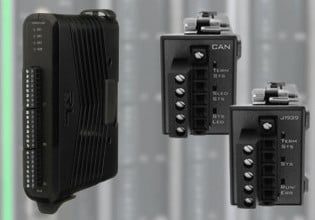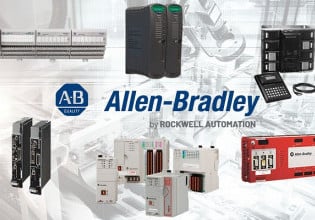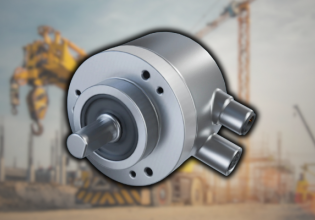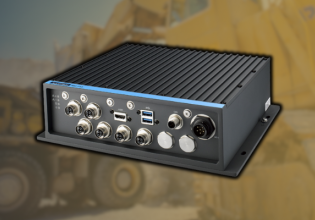Different Types of Automated Pallet Transfer Systems
Automated pallet transfer systems consist of chain conveyors, roller conveyors, and T-carts. What are the advantages and disadvantages of each?
What is a Pallet Transfer System?
Pallet transfer systems are often used in many different applications in the manufacturing and automation industry. A pallet transfer system consists of any piece of machinery used to move pallets around an automated system. They can move stacks of pallets, empty single pallets, or pallets loaded with product.
The systems are useful for reducing repetitive labor and helping free up operators and forklifts for more complex tasks. Pallet transfer systems are especially useful in moving completed pallets away from robotic product stacking cells, where the introduction of an operator would cause the cell to stop operation any time a pallet completes.
There are several ways of autonomously conveying pallets:
- Chain conveyor
- Roller conveyor
- T-cart system
Every system has its advantages and disadvantages, each of which should be looked at closely when designing a cell.
A Closer Look at Each System
Pallet transfer systems are essentially conveyors specifically designed to move pallets around automation cells in a manufacturing or warehouse facility. To better understand the usefulness of each system, we will look into functionality, cost, and behavior.
Chain Conveyor
A chain conveyor is a cost-effective option for moving pallets within a cell that is a robust piece of machinery consisting of only a few moving parts. A chain follows a track driven by a sprocket. The pallet sits on the chain and rides along as a motor drives the sprocket and chain in one direction.

Figure 1. A chain conveyor system. Image used courtesy of Omni
A few advantages are as follows:
- Low cost
- Robust
- Not weight-sensitive
- Simple to repair
A few disadvantages are as follows:
- “Set down” placement is necessary
- No accumulation
- Less forgiving to imperfect pallets
- Generally unable to turn
Chain conveyors are advantageous for moving heavy pallets in a straight line. They can be great for pallet staging and build locations. These conveyors do have some disadvantages, however. Pallets have to be “set down” onto the conveyor from above.
It is difficult to slide pallets onto them without causing damage. This makes transferring between perpendicular chain conveyors difficult, if not impossible. They can also have issues with pallets that are physically imperfect. Pallets missing boards, or containing imperfections, might be more likely to cause failure because of the smaller conveying area on a chain conveyor.
Roller Conveyor
Roller conveyors work similarly to chain conveyors, but offer more versatility. Roller conveyors consist of horizontal tubes driven by gears or chains. Pallets sit on top of the tubes as they roll, causing the pallet to move in the direction of the rolling tube.
Figure 2. Roller conveyors in action. Video used courtesy of Uline
A few advantages are as follows:
- Easier to operate in different directions
- It can move pallets in a curved direction
- Allows accumulation
- It can combine with chain conveyors
- More forgiving with imperfect pallets
A few disadvantages are as follows:
- Often more complex
- More expensive
- Often carry less weight than chain conveyors
- Higher maintenance schedule
Roller conveyors can be used in conjunction with chain conveyors to create a transfer system capable of making 90-degree directional changes. This system is often used after pallets are singulated from stacks. It is easier for roller conveyors to reverse direction and accumulate product.
Pallet Transfer Cart System (T-Cart)
A transfer cart system, or T-cart, is a more complex system than either chain or roller conveyors. They are only used when a conveyor system is not feasible for completing the necessary pallet movements within a cell. Most commonly, they are used around pallet building locations surrounding a robot used to palletize material. A T-cart allows for multiple build stations that can be loaded with different products and are independent of each other.

Figure 3. A T-cart system. Image used courtesy of Dyco
T-carts are a combination of different systems to create an automated machine capable of moving pallets to different locations based on a robotic cell’s needs. The construction of a T-cart usually involves a roller or chain conveyor built on top of a cart with wheels. The wheels ride on top of tracks mounted into the floor of the building. A programmable logic controller (PLC) or I/O from the robot gives the cart information on where to move within the cell.
Pallet Transfer Cart Uses and Operation
Chain and roller conveyors are quite useful for many different applications in manufacturing and automation. They often fill the needs of most systems where pallet transferring is concerned; however, T-carts offer a distinct advantage in certain robotic cell configurations. T-carts can act as a sorting and delivery method for pallets coming off different conveyor lines. This helps to reduce complexity within the system and lessens the amount of space necessary in the cell used for pallet transferring.
T-Cart Cell Example
One of the most common uses for a T-cart system is for pallet build station tending. When a finished or boxed product comes off the manufacturing conveyor, it is often necessary to stack the product onto a pallet for shipment to distribution centers. After the product is on a pallet, the completed pallet is then covered in shrink wrap and labeled for shipment. A T-cart may be necessary if there is more than one type of product or pallet build station before the shrink wrapper or finished pallet conveyor.
A T-cart is programmed to pick up finished pallets and take them to the appropriate locations before shipment. Once the finished pallet has been transferred to the shrink wrapper or out of the cell, the T-cart can then take a singulated pallet back to the build location, where the entire process starts again. The amount of space and labor saved often greatly outnumbers the additional cost of using a T-cart system.
In manufacturing, palletizing completed products is often a necessary part of the process. There are many different ways of moving pallets to the correct location, and the methods described here are a few of many methods. Chain conveyors are cheap and can move heavy pallets around, but they do not allow for accumulation. Roller conveyors are more expensive than chain conveyors but offer more varied use. T-carts automate conveyor systems to create space and labor-saving pallet moving systems.






